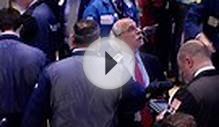NXP Semiconductors, like many semiconductor companies, has seen its share price slump in recent months, driven by weak demand for its products. The semiconductor market is highly cyclical, and these types of lulls in demand are to be expected from time to time. For investors, the focus should be on the long-term prospects of the company, not on the short-term fluctuations of the stock price. With that in mind, here's a look at three numbers that will play a key role for NXP over the next few years.
155.7 million
The market for wearable devices, particularly smart wearable devices like the Apple Watch, is still in its infancy. During 2015, IDC estimates that 72.1 million wearables were shipped worldwide, comprised of 39 million basic wearables, which don't run third-party apps, and 33.1 million smart wearables. By 2019, IDC expects the total number of wearables shipped annually to more than double, rising to 155.7 million.
NXP is the dominant player in the NFC chip market, enabling mobile devices to make payments using systems like Apple Pay, Android Pay, and the various other NFC-based mobile payment systems. Smartphones are increasingly including NFC chips; the iPhone 6 was the first from Apple with the technology, and high-end Android smartphones generally include the chips as well. There's still growth potential in the smartphone market for NXP, despite slowing smartphone unit growth, since many low-end and mid-range Android smartphones still don't include the technology. But the wearable market could offer a major growth opportunity for NXP.

Source: Apple.
The smartphone market expanded from about 173 million units in 2009 to 1.3 billion units in 2014, and while it's impossible to say whether wearable devices will reach the same level of success, the potential for a massive increase in the number of devices that support mobile payments is very real. If wearable devices truly go mainstream over the next few years, along with mobile payments, NXP is in a great position to benefit.
87.9 million
With NXP's acquisition of Freescale Semiconductor now closed, the combined company is a major force in the automotive market. Before the acquisition, NXP was the leading supplier of various automotive semiconductor products, including car radio, audio amplifiers, and keyless entry, and the company had a presence in categories such as ABS, transmission control, and car entertainment.
With Freescale, the combined company is now the largest vendor of automotive semiconductors in the world, with NXP estimating that it has a roughly 13% share of the market, up from just 4% in 2013. Freescale brings with it a strong presence in the advanced driver assistance system and powertrain and engine management markets, making the combined company a more diversified player in the automotive semiconductor industry.
The trends in the automotive market are clear: Connectivity is on the rise, and the age of the self-driving car, while still likely many years away, seems like an inevitability. In 2015, roughly 87.9 million automobiles were sold worldwide, with a forecast from AlixPartners calling for this number to rise to 103.2 million by 2021. These trends will require the semiconductor content in automobiles to increase dramatically, and while NXP certainly isn't the only company going after this market, the company is now well positioned to remain a leader in the space.
$500 million
Every announcement of a merger or acquisition comes with promises of synergies, and NXP's acquisition of Freescale is no exception. The company expects to achieve $200 million of annual cost savings in 2016, with the number eventually reaching $500 million.
The combined company will have roughly $10 billion of annual revenue, and if NXP can manage to hit its synergy target, the profitability of the combined company could improve substantially. NXP has managed operating margins in the mid-teens to low-twenties over the past few years, although the semiconductor industry is cyclical, so the company's average operating margin is likely well below the peak. Freescale has managed lower operating margins in recent years, and the company has posted a net loss in two of the past three years. This leaves plenty of room to improve profitability going forward.
Of course, many companies fail to meet their synergy goals, and there's no guarantee that the integration of Freescale will go smoothly. NXP will report its fiscal-fourth quarter results on Feb. 3, and investors should listen closely to the company's conference call for management's take on the progress of integrating Freescale.
The next billion-dollar iSecret
The world's biggest tech company forgot to show you something at its recent event, but a few Wall Street analysts and the Fool didn't miss a beat: There's a small company that's powering their brand-new gadgets and the coming revolution in technology. And we think its stock price has nearly unlimited room to run for early in-the-know investors! To be one of them, just click here.
RELATED VIDEO

